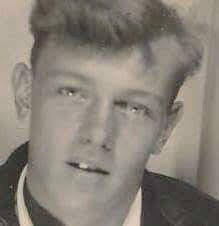During most of my teenage years I usually wore a black trench coat. Considered it was cool. It was in style in our Newark New Jersey Essex County neighborhood in what was then the Columbus Homes Apartments.
. I would still wear one now if I could find one. Very versatile. Just unzip the insulation as the weather starts getting warmer. Big pockets to carry all kinds of teenage stuff. In my case it was my lucky rabbit's foot, apartment keys, packet of cigarettes, self defense weapon, candy, such as chewing gum and Jaw Breakers, (Remember those?) and some money. No, I never had a wallet until I got much older. Darn! I miss those beautiful trench coats!
We were outside most of the time and not behind some computer pressing keys. In short, we had what we called hangouts such as street corners, school gyms, housing project lobbies etc. So we wanted to blend in with our coats and not stand out in a non-cool quirky kind of way. A black trench coat did that for us.
. I would still wear one now if I could find one. Very versatile. Just unzip the insulation as the weather starts getting warmer. Big pockets to carry all kinds of teenage stuff. In my case it was my lucky rabbit's foot, apartment keys, packet of cigarettes, self defense weapon, candy, such as chewing gum and Jaw Breakers, (Remember those?) and some money. No, I never had a wallet until I got much older. Darn! I miss those beautiful trench coats!
We were outside most of the time and not behind some computer pressing keys. In short, we had what we called hangouts such as street corners, school gyms, housing project lobbies etc. So we wanted to blend in with our coats and not stand out in a non-cool quirky kind of way. A black trench coat did that for us.
Last edited:




